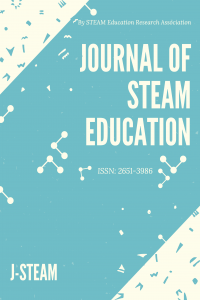Perceptions of Academia of Different Health Professions Towards Inter Professional Education in Sri Lanka
Interprofessional education is an approach to educating and training students and practitioners from different professions to work in a collaborative manner. The purpose of this study was to examine attitudes towards interprofessional in readiness for interprofessional learning scale was measured with respect to how their influence in clinical situations in Sri Lanka. The questionnaires were sent though post or emails to the consenting participants as per their suggestions of most convenient ways during January 2018 to academics in Sri Lanka representing all faculties in the country including medicine, nursing and physical therapy educational programmes. There were 46% replied and hundred percent of respondents agreed that it was important to patients would ultimately benefit by provide interdisciplinary learning opportunities. The results of this study suggest that a favorable perception of both interprofessional teamwork and interprofessional education exists amongst academic administrators of Sri Lankan health professional education programs.
Anahtar Kelimeler:
Attitude, Interprofessional, education, relationship
Perceptions of Academia of Different Health Professions Towards Inter Professional Education in Sri Lanka
Interprofessional education is an approach to educating and training students and practitioners from different professions to work in a collaborative manner. The purpose of this study was to examine attitudes towards interprofessional in readiness for interprofessional learning scale was measured with respect to how their influence in clinical situations in Sri Lanka. The questionnaires were sent though post or emails to the consenting participants as per their suggestions of most convenient ways during January 2018 to academics in Sri Lanka representing all faculties in the country including medicine, nursing and physical therapy educational programmes. There were 46% replied and hundred percent of respondents agreed that it was important to patients would ultimately benefit by provide interdisciplinary learning opportunities. The results of this study suggest that a favorable perception of both interprofessional teamwork and interprofessional education exists amongst academic administrators of Sri Lankan health professional education programs.
___
- Bridges, D., Davidson, R. A., Soule Odegard, P., Maki, I. V., & Tomkowiak, J. (2011). Interprofessional collaboration: three best practice models of interprofessional education. Medical education online, 16(1), 6035.
- Buring, S. M., Bhushan, A., Broeseker, A., Conway, S., Duncan-Hewitt, W., Hansen, L., & Westberg, S. (2009). Interprofessional education: definitions, student competencies, and guidelines for implementation. American journal of pharmaceutical education, 73(4).
- CAIPE, Interprofessional education (1997). A definition. London: Centre for the Advancement of Interprofessional Education.
- Coster, S., Norman, I., Murrells, T., Kitchen, S., Meerabeau, E., Sooboodoo, E., & d’Avray, L. (2008). Interprofessional attitudes amongst undergraduate students in the health professions: a longitudinal questionnaire survey. International journal of nursing studies, 45(11), 1667-1681.
- Department of Health (2001). Investment and reform for NHS staff: taking forward the NHS Plan. Department of Health, London.
- Gardner, S. F., Chamberlin, G. D., Heestand, D. E., & Stowe, C. D. (2002). Interdisciplinary didactic instruction at academic health centers in the United States: attitudes and barriers. Advances in Health Sciences Education, 7(3), 179-190.
- Gilbert, J. H. (2005). Interprofessional learning and higher education structural barriers. Journal of Interprofessional Care, 19(sup1), 87-106.
- Hinrichs, R. J., Bakker, C. J., Brigham, T. J., Stevens, G. A., Alpi, K. M., & Lyons, A. (2019). Health Sciences Librarians’ Perceptions of Interprofessional Education & Collaboration.
- Lindqvist, S., & Educaton, I. (2010). The World Health Organisation Framework for Action on Interprofessional Education & Collaborative Practice. The World Health Organisation Framework for Action on Interprofessional Education & Collaborative Practice.
- Merriman, C., Chalmers, L., Ewens, A., Fulford, B., Gray, R., Handa, A., & Westcott, L. (2020). Values-based interprofessional education: how interprofessional education and values-based practice interrelate and are vehicles for the benefit of patients and health and social care professionals. Journal of interprofessional care, 1-3.
- Mu’taman Jarrar, H. A. R., & Don, M. S. (2016). Optimizing quality of care and patient safety in Malaysia: the current global initiatives, gaps and suggested solutions. Global journal of health science, 8(6), 75.
- Mu’taman Jarrar, H. A. R., Sebiany, A. M., & AbuMadini, M. S. (2018). Nursing duty hours’ length and the perceived outcomes of care. Global Journal of Health Science, 10(4).
- Parsell, G., & Bligh, J. (1999). The development of a questionnaire to assess the readiness of health care students for interprofessional learning (RIPLS). Medical education, 33(2), 95-100.
- The Norwegian Directorate of Health Organization of interdisciplinary pain clinics Ministry of Health and Care Services (2015)
- World Health Organization. (1988). Learning together to work together for health: report of a WHO Study Group on Multiprofessional Education of Health Personnel: the Team Approach [meeting held in Geneva from 12 to 16 October 1987]. World Health Organization.
- Zechariah, S., Ansa, B. E., Johnson, S. W., Gates, A. M., & Leo, G. D. (2019, December). Interprofessional Education and Collaboration in Healthcare: An Exploratory Study of the Perspectives of Medical Students in the United States. In Healthcare (Vol. 7, No. 4, p. 117). Multidisciplinary Digital Publishing Institute.
- Zeer, E. F., Tretyakova, V. S., & Miroshnichenko, V. I. (2019). Strategic Directions of Pedagogical Personnel Training for the System of Continuing Vocational Education. The Education and science journal, 21(6), 93-121.
- ISSN: 2651-3986
- Başlangıç: 2017
- Yayıncı: Şahin İDİN
Sayıdaki Diğer Makaleler
Demystifying the ‘Dense’ Problem of Density Using 5E Learning Cycle
Sylvester DONKOH, Mıchael KOFI ANNAN, Jennifer OSEİ
Richard Dein ALTAREZ, Manuel Paolo S AUSTRİA, Joyce Ann L BAYRON, Tristan P PALTONGAN, Reeven J TEOFİLO, Mary Assumptha P SANTİANEZ, Rogel M PODA-AN, Alecxander S IBRADO
Muhammad Dicky DARMAWAN, Siti SYAHRA, Nikki Heherson DAGAMAC
Özlem İRVEN AZGIN, Burcu ŞENLER
Creating the Science Learning Environment of Secondary School Students’ Dreams
